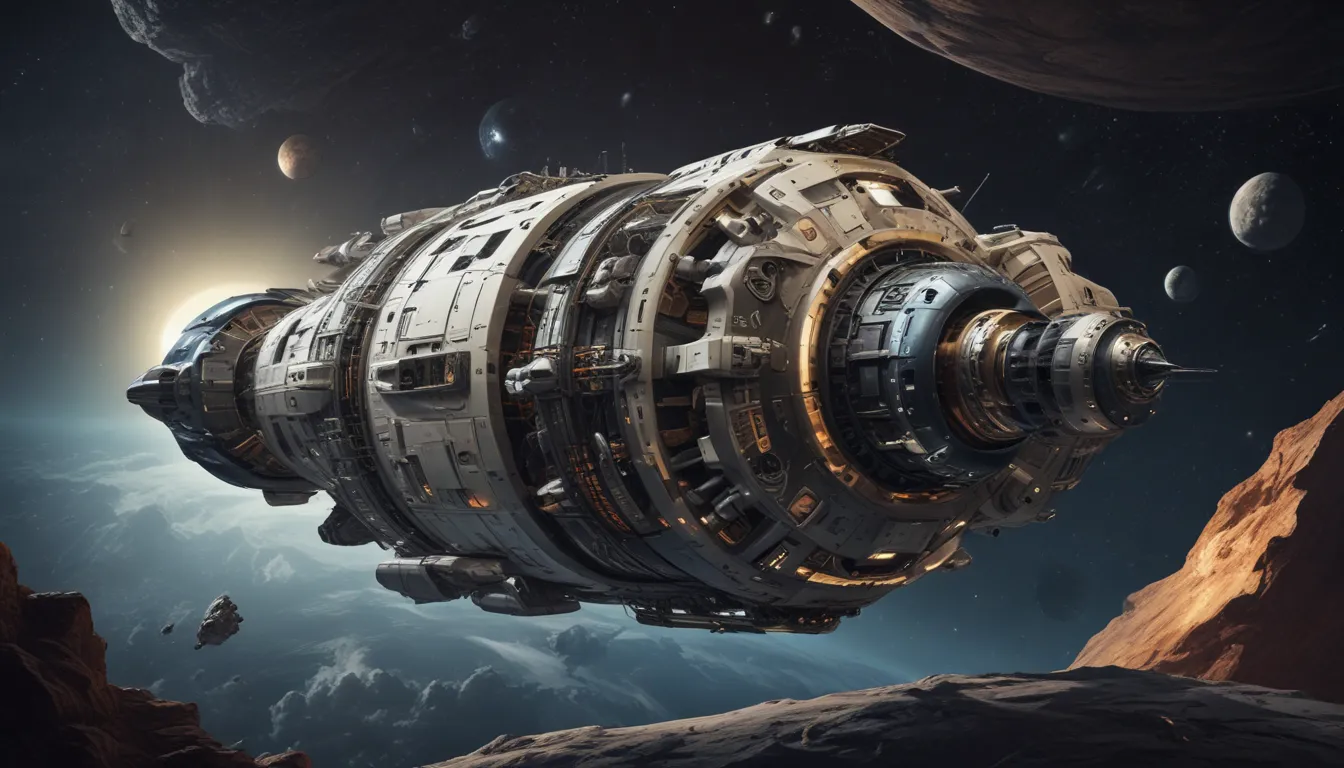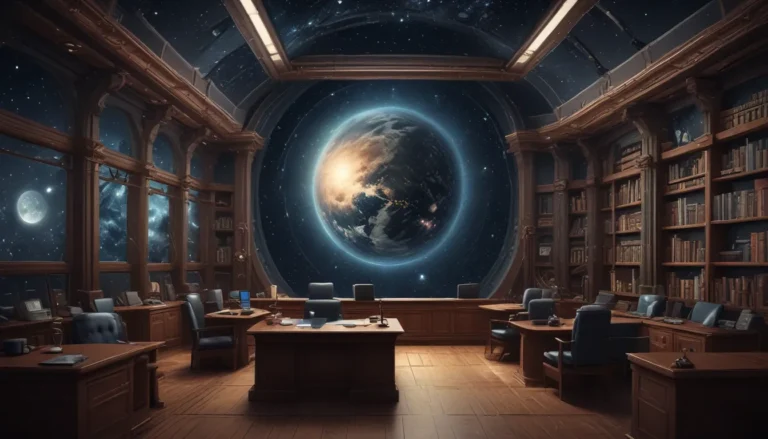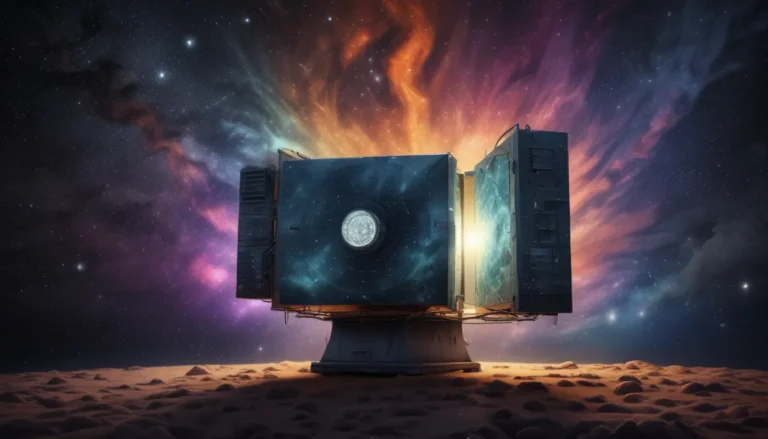The pictures we use in our articles might not show exactly what the words say. We choose these pictures to make you interested in reading more. The pictures work together with the words but don’t take their place. The words still tell you the important facts.
Embark on a journey through the wonders of spacecraft design as we unravel 10 intriguing facts that will expand your perception of the cosmos. From groundbreaking engineering feats to cutting-edge technology, spacecraft design has revolutionized our understanding of the universe and opened up new frontiers for exploration. Fasten your seat belts and prepare for an awe-inspiring ride into the captivating realm of space exploration.
The Pioneering Spirit of Spacecraft Design
Spacecraft design has propelled humanity into new frontiers, marking significant milestones such as the first manned spaceflight and the historic moon landing. These design marvels have not only expanded our cosmic horizons but have also set the stage for groundbreaking discoveries. From the iconic Vostok 1 to the innovative Mars rovers, spacecraft designs continue to push the boundaries of exploration, paving the way for a future filled with exciting possibilities.
The Historic Vostok 1 Mission
In 1960, the Soviet Union accomplished a monumental feat in space exploration with the design of Vostok 1. This revolutionary spacecraft carried cosmonaut Yuri Gagarin on April 12, 1961, marking the first human orbit around Earth and heralding a new era of space travel.
Journey to the Moon: The Lunar Module
The Apollo program introduced the world to the lunar module, a vital component that transported astronauts from the command module to the lunar surface and back. The historic landing of the lunar module during the Apollo 11 mission on July 20, 1969, remains a defining moment in human history, showcasing the ingenuity of spacecraft design.
A Legacy of Exploration: The Space Shuttle
The inception of the space shuttle revolutionized space travel with its reusable design, enabling a diverse range of missions from satellite deployment to scientific experiments. The launch of the first operational space shuttle, Columbia, on April 12, 1981, marked a new chapter in space exploration, setting the stage for further advancements in spacecraft technology.
Capturing the Cosmos: The Hubble Space Telescope
Launched in 1990, the Hubble Space Telescope has redefined our understanding of the universe with its cutting-edge design and advanced optics. By capturing detailed images of distant galaxies and celestial objects, the Hubble has become a beacon of scientific discovery, unveiling the beauty and mysteries of the cosmos.
Collaboration in Orbit: The International Space Station
The International Space Station (ISS) stands as a testament to international cooperation in space exploration. Serving as a research laboratory and living space for astronauts from around the globe, the ISS showcases the innovative design that enables long-duration space missions and scientific experiments in microgravity.
Unveiling Martian Mysteries: The Mars Rovers
The design of Mars rovers, including Spirit, Opportunity, and Curiosity, has revolutionized our understanding of the Red Planet. These robotic explorers have ventured across the Martian landscape, collecting invaluable data and images that have shed light on Mars' geology and potential for life, showcasing the transformative power of spacecraft design.
Beyond the Horizon: Interplanetary Spacecraft
Voyager 1 and Voyager 2 exemplify the pinnacle of interplanetary spacecraft design, venturing beyond our solar system to explore distant planets and celestial bodies. These spacecraft have braved the harsh conditions of deep space, providing unprecedented insights into the outer reaches of our galaxy and expanding our cosmic perspective.
Robotic Pioneers: Exploring Celestial Worlds
Robotic spacecraft like the Mars rovers and the Cassini-Huygens mission have become trailblazers in exploring celestial bodies where human presence is limited. Their innovative designs empower them to conduct experiments, capture images, and gather data in extreme environments, unveiling new realms of discovery in our cosmic backyard.
Ensuring Connectivity in Space: Docking Mechanisms
Spacecraft docking mechanisms play a pivotal role in facilitating crew transfers and supply exchanges between different spacecraft. Innovations like the APAS and the International Docking System Standard (IDSS) have enabled safe and efficient connections during space missions, fostering collaboration and exploration in the vast expanse of space.
The Future of Spacecraft Design: Innovations on the Horizon
The evolution of spacecraft design continues to push the boundaries of exploration with concepts like spaceplanes, reusable rockets, and advanced propulsion systems. These visionary designs aim to enhance efficiency, reduce costs, and unlock new frontiers in space exploration, setting the stage for groundbreaking discoveries yet to come.
Spacecraft design embodies the spirit of human ingenuity, blending art, science, and exploration into magnificent creations that propel us closer to the stars. As we venture further into the unknown, spacecraft design remains at the forefront of innovation, inspiring generations to reach for the heavens and unravel the mysteries of the cosmos.
Exploring the Future of Spacecraft Design
As we navigate through the awe-inspiring realm of spacecraft design, we are reminded of the boundless possibilities that lie ahead. The quest for space exploration continues to captivate our imagination, driving us to push the limits of what is achievable. Join us on this extraordinary journey as we chart a course towards a future where the wonders of spacecraft design lead us to new horizons in the infinite expanse of the universe.






